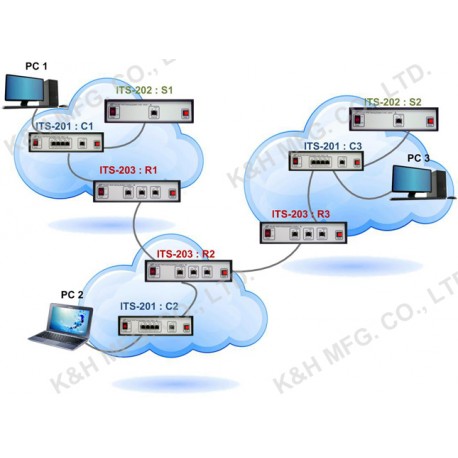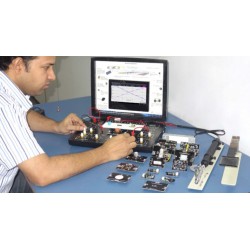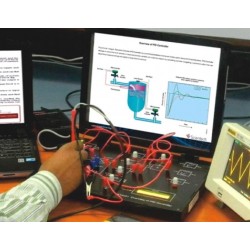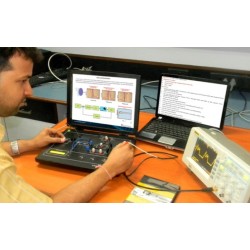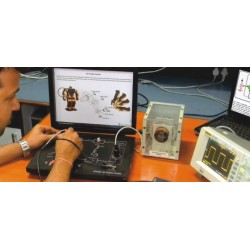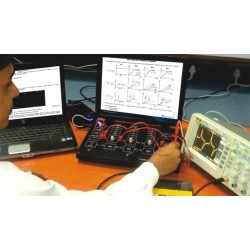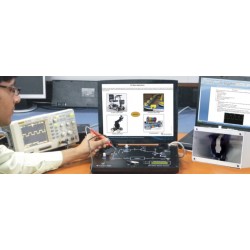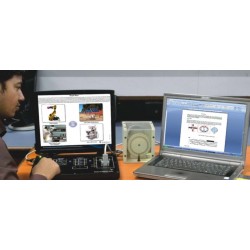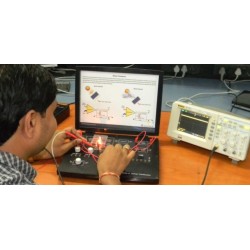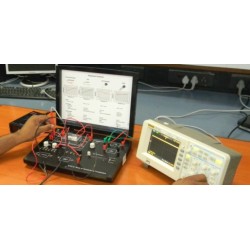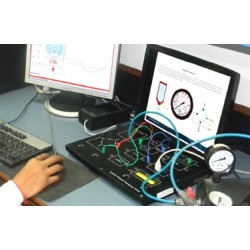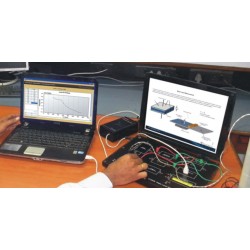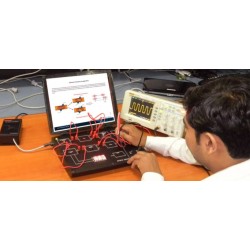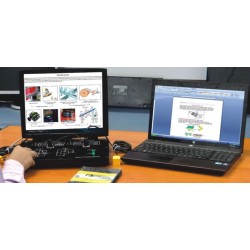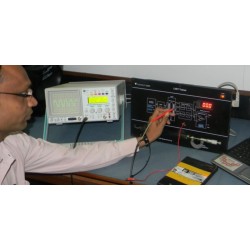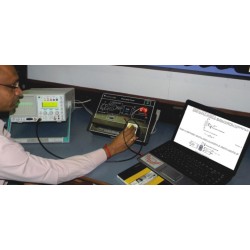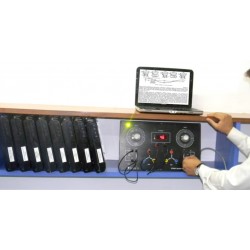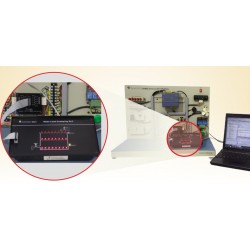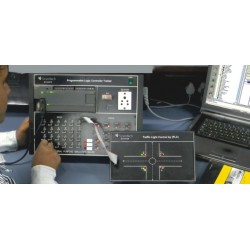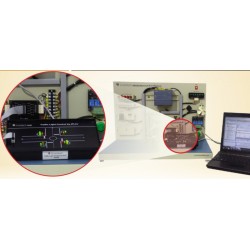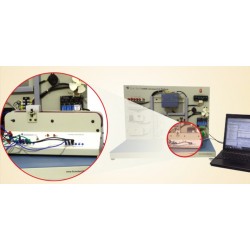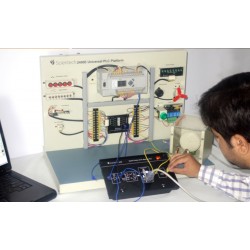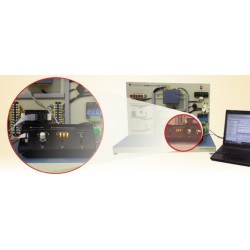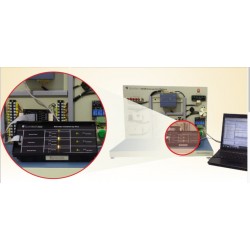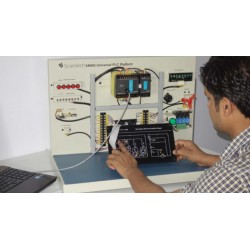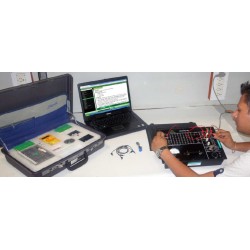No products
Prices are tax excluded
Product successfully added to your shopping cart
There are 0 items in your cart. There is 1 item in your cart.
ITS-200series IPv6 Training System
ITS-200series
New
Explosive growth in network device diversity and mobile communications, along with global adoption of networking technologies, have overwhelmed IPv4 and have driven the development of a next-generation Internet Protocol (IPv6).
- Consulta este producto
- Remove this product from my favorite's list.
- Add this product to my list of favorites.
In addition to providing more address space, IPv6 not only increases routing efficiency and network-layer security (built-in the IPSec encryption mechanism) but also creates new ways of addressing and more advanced QoS mechanisms, as the protocol develops.
The design purpose of ITS-200 series is to provide learners with a clear and comprehensive understanding of the protocol and operating behavior of the IPv6 specification. The complete system includes ITS-201(host:client) , ITS-202(host:server) and ITS-203(router). The interaction of these three devices can perform experiment as a group or stand alone.
ITS-201 (host: client)
1. IPv4 and IPv6 Dual-Stack system
2. Support Remote Packet Capture Service (RPCAP)
3. Using filterable TAP to complete load-balancing and port-bonding to avoid browsed packet loss.
4. Provide GUI software to send and browse IPv4 and IPv6 packet.
IPv4 : ICMP, TCP, UDP
IPv6 : Support ICMPv6, DHCPv6, Upper layer packet format and “Next Header” with Hop-by-Hop, Routing,
Fragment, Destination…etc.
5. Console and Port1~Port4 connect ports all support Auto-Negotiation.
6. Experiments cover OSI Model 2~7 layer.
ITS-202 (host: server)
1. ITS-202 (host : server), one of ITS-200 series, is designed by a series of internet service and web-based GUI interface.
2. ITS-202 can be configured as 2 types of server :
A type offers IPv6 DHCP, IPv6 DNS and IPv6 web services.
B type offers IPv6 FTP, IPv6 SMTP, IPv6 POP and IPv6 web services.
3. In order to provide cross-platform design, ITS-202 can also be configured through Microsoft Internet Explorer, Mozilla
Firefox, Google Chrome and other browsers.
ITS-203 (router)
ITS-203(router) , one of ITS-200 series , is designed by a series of network topology and user friendly GUI software. It supports static and dynamic routing protocols. ITS-203's dynamic routing protocol supports RIPng (Routing Information Protocol next generation) and OSPFv3 (Open Shortest Path First for IPv6). Both are Interior Gateway Protocol(IGP) .
ITS-201 (host: client)
Exp. 1 : ITS-201 brief introduction
Exp. 2 : Cisco 1905 router brief introduction
Exp. 3 : IPv6 Header
Exp. 4 : IPv6 Extension Header
Exp. 5 : IPv6 Addressing
Exp. 6 : DHCPv6
Exp. 7 : ICMPv6 – Error Messages
Exp. 8 : ICMPv6 – Information Messages
Exp. 9 : Neighbor Discovery
Exp.10 : IPv6 Transition
Exp.11 : IPv6 Gateway and Route
ITS-202 (host: server)
Exp. 1 : Observe IPv6 HTTP Packet
Exp. 2 : Observe IPv6 DHCP Packet
Exp. 3 : Observe IPv6 DNS Packet
Exp. 4 : Observe IPv6 FTP Packet
Exp. 5 : Observe IPv6 Mail Packet
ITS-203 (router)
Exp. 1 : Connected route
Exp. 2 : Configuring Routing Entries
Exp. 3 : Recursive Static Routes
Exp. 4 : Default Route
Exp. 5 : Configuring Traffic Discard
Exp. 6 : Floating Static Route
Exp. 7 : Router Advertisement
Exp. 8 : Routing Table
Exp. 9 : Bellman-Ford Algorithm
Exp. 10 : Limitations of RIPng
Exp. 11 : Convergence Time of RIPng
Exp. 12 : Route Poisoning of RIPng
Exp. 13 : Packet Processing of RIPng
Exp. 14 : Area Range of OSPFv3
Exp. 15 : Non-Backbone Area and Virtual-Link of OSPFv3
Exp. 16 : External Route of OSPFv3
Exp. 17 : DR/BDR Election and Fast Convergence in OSPFv3
Exp. 18 : Router-LSA and Network-LSA
Exp. 19 : Inter-Area-Prefix-LSA
Exp. 20 : Inter-Area-Router-LSA / AS-External-LSA / Link-LSA / Intra-Area-Prefix-LSA

